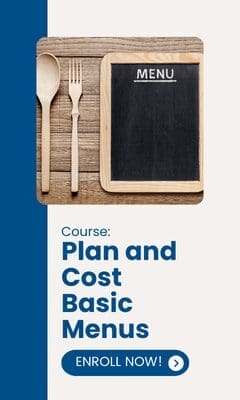 The dictionary defines “Experience” as “an event or occurrence which leaves an impression on someone”.
The dictionary defines “Experience” as “an event or occurrence which leaves an impression on someone”.
In my early days as a hospitality trainer, I always told my trainees that when a guest walks into your restaurant and pays a certain amount for your sandwich, he or she is not paying for the sandwich. They are paying for the “experience”. Today, this holds true for so many other interactions.
Whether that be buying a pair of trousers from a store, visiting the bank to open an account, walking in to a car showroom, visiting a clinic/hospital, the list could go on, but essentially any interaction which has a user/customer/guest on one end and the product/service provider on the other end, what really makes or breaks the interaction is the “experience”.
Many players in the hospitality industry have been able to define and deliver excellence when it comes to customer experience. What the hospitality industry does well is to make service excellence the backbone to deliver on this “experience”.
If industries with a large B2C interface like retail, banking, automotive, healthcare want to differentiate themselves from the competition, they must take a leaf from the hotel/hospitality industry.
So how does one go about incorporating service excellence? By way of this article, I will try and throw light on a few relevant steps than an organization can take to embark on this journey.
Instill your value system
Tony Hseih, the CEO of Zappos says that “Customer Service shouldn’t be a department, it should be the entire company.” For frontline staff to deliver on service excellence, it first has to be made a priority and a part of the organization’s value system. It has to flow from the top. Simply training or instructing your staff to be hospitable with the customer will not work – it has to be imbibed within the culture of the organization.
Listen to your customer
What is your customer saying about the service delivery of your brand? At Disney World, at least once in his or her career, each manager spends a day touring the park in a Mickey, Minnie, Goofy, or other character costume. All Disney World managers spend a week each year on the front line—taking tickets, selling popcorn, or loading and unloading rides.
At Marriott, to stay in touch with customers, Chairman of the Board and President Bill Marriott personally reads some 10 percent of the 8,000 letters and 2 percent of the 750,000 guest comment cards submitted by customers each year. Once you know what the customer is actually saying about the service delivery of the brand, it becomes easier to bridge the gap between where you are and where you want to be.
Hire the right person
Technical expertise is important, but when you are hiring an individual for a job role that involves a high degree of interaction with the customer (internal or external), it is critical to focus on the softer elements like communication, grooming and people’s skills. Setting up attribute-based interviews which focus on these soft skills are helpful. Hiring candidates with a hospitality background is always a plus.
Define and document standards
The customer will have multiple opportunities to form an impression about your organization. Listing down of those opportunities as a part of the customer service cycle and what needs to be done during those interactions/opportunities is essential if you want your frontline staff to deliver excellence on them. In some cases, hardcoding the experience works, whereas in some cases setting up a broad framework and guideline within which your employees can operate works better. The decision should be solely based on what would work better for the end customer.
Equip your employees to deliver on excellence
Documenting the standards is not enough. You need to equip your employees with the right knowledge and skills required to deliver service excellence on the defined standards. Effective training workshops and interventions are very helpful in facilitating the knowledge and skill transfer to your employees. Additionally, setting up processes and guidelines which allow for quick decision making and remove bureaucracy have a great benefit.
Empower
The Ritz Carlton allows, better yet encourages employees to spend up to $2000 to solve guest issues. More than the money, it’s about giving control to the employees to use their time, effort and when needed, the company’s money, to enhance the experience of any guest. Till the time your employee does not own the interaction and feel like they are in control to make decisions, you are not equipping them to deliver on excellence (both from a process and mindset perspective)
Reinforce
Whenever the opportunity arises, reinforce the importance of service excellence within the organization. Many companies brand their program on service excellence – making it aspirational. Use visual cues as a constant reminder for employees
These are some of the key elements that play a pivotal role in achieving service excellence. I’m sure you’ve heard the age old adage: “When it comes to making a difference and delivering on excellence, it’s the smaller things that matter.” But what one needs to realize is that for those smaller things to happen, an organization has to set up a robust mechanism that enables the smaller things to take place seamlessly.
About the author
 Kanav Mata is an EHL Advisory Services consultant based out of the India office. As a key member of the Hospitality Advisory & Service DNA team, he is responsible for People, Process and Product development related solutions for hospitality and non-hospitality companies. Using his varied experience in the field of Hospitality and Learning & Development, he designs and delivers end-to-end solutions with a clear and measurable output. He is also responsible for generating various training mandates on Behavioral Skills, Service Excellence, Personal Excellence and Leadership Skills (across industry verticals) in India and the Middle East.
Kanav Mata is an EHL Advisory Services consultant based out of the India office. As a key member of the Hospitality Advisory & Service DNA team, he is responsible for People, Process and Product development related solutions for hospitality and non-hospitality companies. Using his varied experience in the field of Hospitality and Learning & Development, he designs and delivers end-to-end solutions with a clear and measurable output. He is also responsible for generating various training mandates on Behavioral Skills, Service Excellence, Personal Excellence and Leadership Skills (across industry verticals) in India and the Middle East.
Prior to joining EHL Advisory Services, he worked in various managerial positions in the luxury hospitality industry before moving to a Boutique Learning and Development Consulting firm, where he spearheaded a team of Master Trainers, Subject Matter and Process Experts and Instructional and User Experience Designers – executing customized and cutting edge Training and Consultancy solutions across Industry Verticals.



















